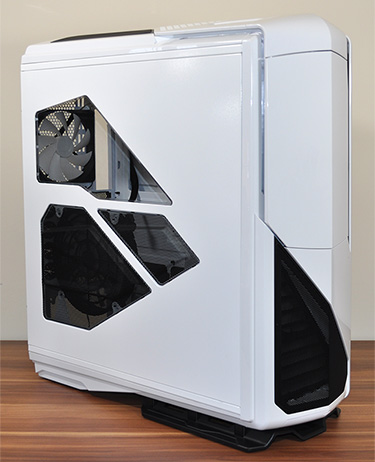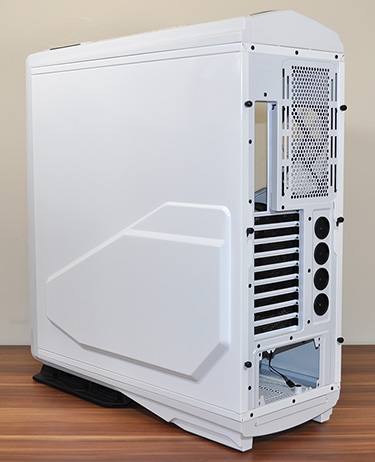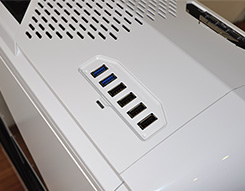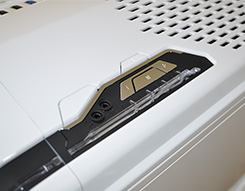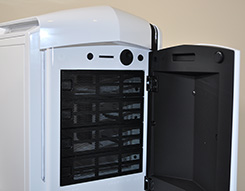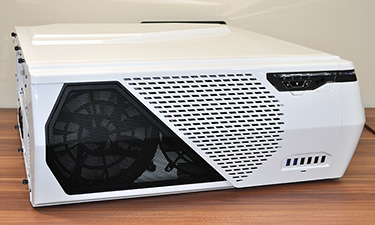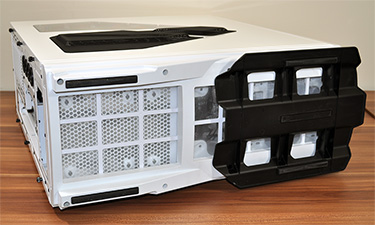Introduction
NZXT has to be classed as one of the most interesting chassis manufacturers around. The company, now eight years old, arrived on the scene with low-cost gaming solutions that touted bags of cooling potential at often bargain-basement prices.
That hit-'em-hard approach was enough for NZXT to get a foothold, and the manufacturer has slowly but surely improved on quality in the subsequent years. The culmination of NZXT's progress is arguably best realised by the 2012 Phantom 820.
Priced at £200, the Phantom 820 is an expensive proposition for any builder, but it's proof that NZXT has its sights set higher. At this price point, the Phantom 820 is up against premium cases such as the Corsair Obsidian Series 800D.
Trouble is, NZXT chassis have thus far had a tendency to look plasticky and overly gamer-orientated. Can the Phantom 820 shake that habit? Well, yes and no. This full-tower behemoth is still a steel frame covered in plastic elements and consequently lacks the ultra-robust feel of all-metal alternatives, but NZXT has toned down the styling a bit. The Phantom 820 still has the hallmarks of a typical gaming chassis - lots of angles, protruding plastic parts and a good splattering of LEDs - but somehow or other, NZXT has found a reasonable middle ground. It's not as vulgar as we'd feared, and in person, there's something actually quite cool about it.
Though, that isn't to say it'll be to everyone's liking. Users who prefer a sleeker look will instantly be put off by the Phantom 820's showy exterior - be it in Black, Gunmetal Grey or White - and, though the steel central frame is sturdy, the plastic additions don't provide the premium feel you'd expect from a £200 case.
If you're undecided on looks, perhaps NZXT's mammoth feature list will be able to convince you. Let's start on the outside, where the Phantom 820 has a smorgasbord of buttons spread across the top. On the top-left side of the chassis you'll find half-a-dozen USB ports (two are of the SuperSpeed variety), and directly opposite is another strip featuring headset and microphone jacks, power and reset buttons, as well as three silver buttons that control the speed of any connected fans.
NZXT Phantom 820 Specification |
||
|---|---|---|
| Case Type | Full-Tower | |
| Materials | Steel Frame, Plastic Accents | |
| Colours | Black / Grey / White | |
| Motherboard Support | E-ATX, XL-ATX, ATX, M-ATX | |
| Drive Bays | External | 5.25in x 4 |
| Internal | 3.5/2.5in x 6 | |
| Fan Capacity | Top: 2 x 200mm / 2 x 140mm / 3 x 120mm Front: 1 x 200mm Bottom: 2 x 140mm / 2 x 120mm Rear: 1 x 140mm / 1 x 120mm Side: 1 x 200mm Pivot: 1 x 140mm / 1 x 120mm |
|
| Expansion Slots | 9 | |
| I/O Panel | USB 3.0 x 2 USB 2.0 x 4 Mic x 1, Audio x 1 SD Card Reader Integrated HUE LED lighting Digital Fan Controller |
|
| Dimensions (H x W x L) | 650mm x 235mm x 612mm | |
| Weight | 15kg | |
The integrated digital fan controller has four channels, with the middle button allowing you to flip between them, and the up and down buttons are used to select one of five speed gradients. The fans turn off completely at the lowest setting and ramp up to maximum speed on the highest setting.
Flip open the door and, in addition to the four optical bays, NZXT includes an SD card reader (connected to your motherboard via a USB 2.0 header), a toggle switch for the chassis' integrated HUE lighting system (you can switch zones or turn the LEDs off completely), a dial allowing you to change the colour of the internal lighting, and a toggle switch for the dedicated rear I/O light.
There's no hot-water dispenser, sadly, but NZXT has covered pretty much everything else and the Phantom 820 isn't lacking in extra little touches, either. All the bundled screws are neatly presented in a compartmentalised case, the four fan-controller channels are accompanied by small LEDs that glow brighter depending on fan speed, and the rubberised HUE colour-control dial has a nice feel about it and makes LED colour selection a doddle.
There's a lot going on, and we enjoy the fact that the Phantom 820 is designed to be a big box of tricks, but there are a few minor issues. The chassis' reset button is too close to the fan controller for our liking - it might have been better hidden behind the front door - and the door itself has limitations; it doesn't open much beyond 90 degrees, it can only open to the right, while the plastic material comes across as cheap.
But what the Phantom 820 lacks in refinement, it more than makes up for with ambition. Perusing the specification sheet, we can see that large E-ATX motherboards are supported, nine expansion slots are available, and up to nine fans can be installed. Included in the £200 fee are four pre-configured fans; a front 200mm intake, a side 200mm intake, a top 200mm exhaust and a rear 140mm exhaust.
Airflow should be sufficient for even the meatiest of builds, but there's plenty of room for expansion - particularly on the liquid-cooling front, where the Phantom 820 provisions for both a 280/360mm radiator up top and a 240/280mm radiator at the base of the chassis.
Dust filters are plentiful, with the spring-loaded bottom front and rear covers popping out easily, and though the Phantom 820 is monstrous in size, NZXT is putting the space to good use. It's worth re-emphasising the chassis' scale - it only just fits under our desk, with very little room to spare - but the Phantom 820's sheer size suggests that it'll be ultra-easy to build into.






